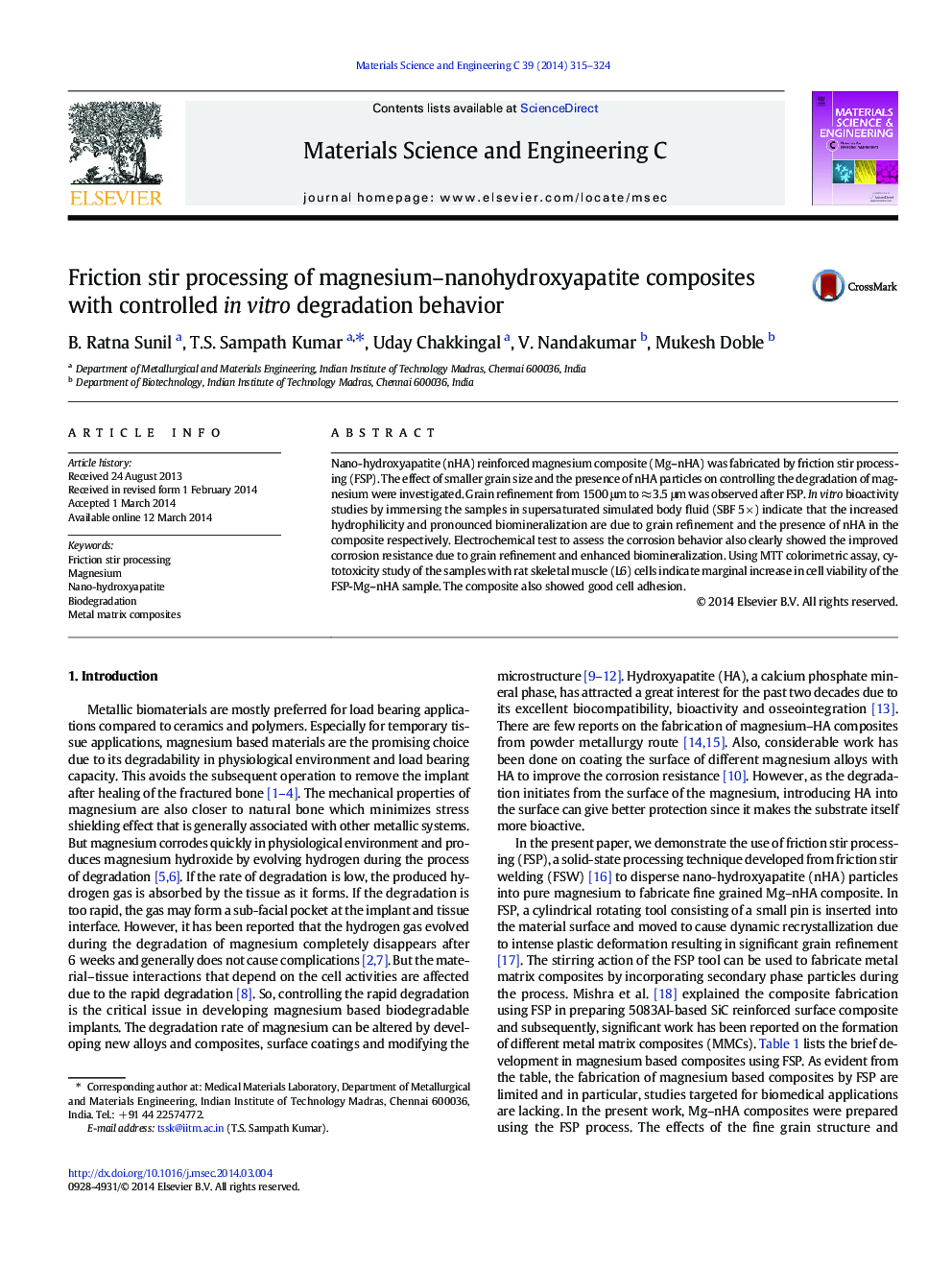| Article ID | Journal | Published Year | Pages | File Type |
|---|---|---|---|---|
| 1428793 | Materials Science and Engineering: C | 2014 | 10 Pages |
•Magnesium–nanohydroxyapatite composite was produced by friction stir processing.•Smaller grain size and incorporated hydroxyapatite enhanced the biomineralization.•Improved corrosion resistance was found for the composite in simulated body fluid.•Negligible toxicity for all of the samples towards rat skeletal muscle cells•Better cell adhesion due to increased wettability and reduced degradation rate
Nano-hydroxyapatite (nHA) reinforced magnesium composite (Mg–nHA) was fabricated by friction stir processing (FSP). The effect of smaller grain size and the presence of nHA particles on controlling the degradation of magnesium were investigated. Grain refinement from 1500 μm to ≈ 3.5 μm was observed after FSP. In vitro bioactivity studies by immersing the samples in supersaturated simulated body fluid (SBF 5 ×) indicate that the increased hydrophilicity and pronounced biomineralization are due to grain refinement and the presence of nHA in the composite respectively. Electrochemical test to assess the corrosion behavior also clearly showed the improved corrosion resistance due to grain refinement and enhanced biomineralization. Using MTT colorimetric assay, cytotoxicity study of the samples with rat skeletal muscle (L6) cells indicate marginal increase in cell viability of the FSP-Mg–nHA sample. The composite also showed good cell adhesion.
